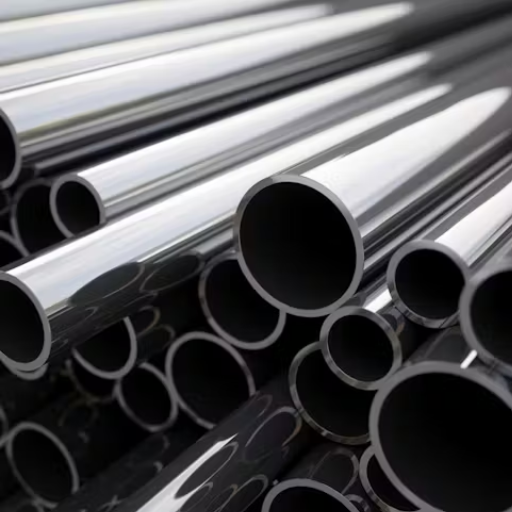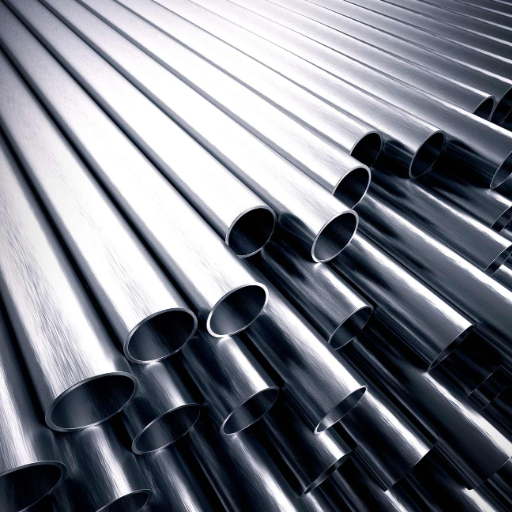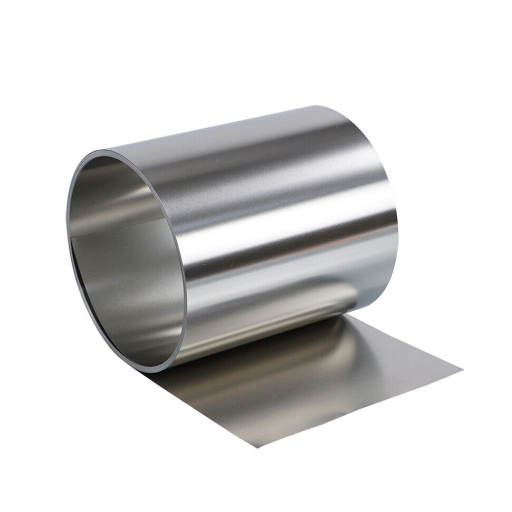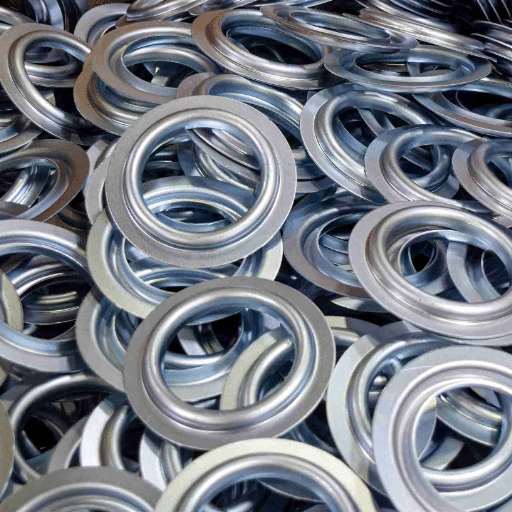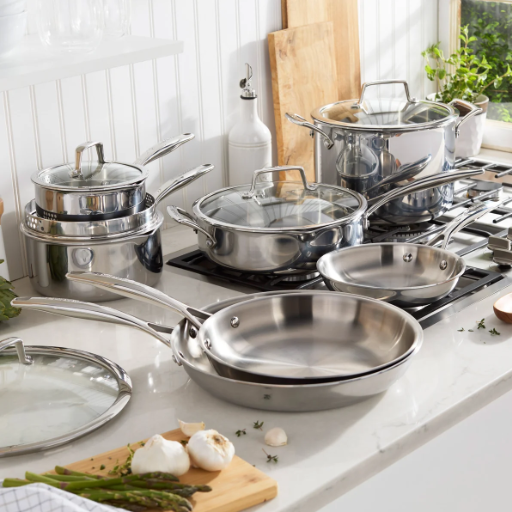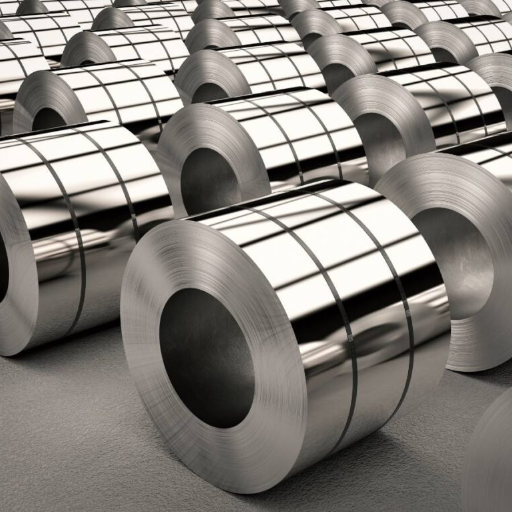The market for gold and silver precious metals does not include the rare elements that are much more valuable than them. These unique metals, as is the case with Silver and Gold, are preferred due to their physical and chemical properties. The technology sector, automotive sector, healthcare and aerospace industries are just some examples where these elements are crucial. This article reveals the 10 most expensive metals in the world, detailing their value and application, as well as their scarcity and the rising demand. Investors, science lovers, and those who simply want to bear a glimpse of the periodic table’s treasures, this read will open your eyes on some of the most scarce and expensive metals that impact our world. The materials are much more than important than you have ever thought, and the secrets and significance that come along with them are truly extraordinary.
What are the Top 10 Most Expensive Metals?

- Rhodium
Famous for its mercilessness and rhodium’s properties of reflection, rhodium is predominantly used for catalytic converters where harmful emissions is reduced.
- Palladium
A pivotal vehicle industry metal, palladium is paramount for catalytic converters and also employed in jewelry and electronics.
- Gold
Used in jewelry, electronics ,and as a financial commodity, gold is valued for its rarity and versatility.
- Platinum
Platinum is greatly useful in catalytic industrial automotive applications, in jewelry, and for other industrial applications.
- Iridium
High performance products such as spark plugs and scientific paraphernalia utilize iridium which is extremely dense and corrosion resistant.
- Osmium
With the fountain pen tips, electrical contacts, and some specialized alloys, osmium which is the densest naturally occuring metal is applied.
- Ruthenium
In the electronics and chemical industrial industry, ruthenium is highly useful because it increases the strength of the alloys containing platinum and palladium.
- Rhenium
Rhenium jet engines, and petrochemicals, is valued for being vital in these applications, especially due to the significance high melting point.
- Silver
Silver’s unrivaled thermal and electrical conductivity makes it a fundamental part of electronics, photography, and jewelry.
- Indium
Indium is used in touch screens, LCDs, and solar panels for improved efficiency and functionality because it is softer and rarer.
These metals are not only rare but are in high demand across industries because of advanced technologies their properties are remarkable.
What is the price per gram of rhodium?
The price of market rhodium, one of the rarest and most precious metals, can go over $400; its price per gram changes depending on demand. The core reason for the change of pricing is production limits, automotive and jewelry industry demand. Availability of the economic region increase or drawbacks the value of trade. Thus, the price of rhodium can significantly drop or increase and stand at $400-$600.
How does palladium compare to gold and silver?
Palladium is similar to gold and silver as a precious metal, but its properties, behavior in the market and uses set it apart. It is mostly used in catalytic converters within the exhaust systems of automobiles, making it vital for emission reduction in gasoline cars. Its value is often enhanced by this industrial demand, at times even costing more than gold depending on the market. Unlike silver that has industrial applications principally in electronics and jewelry, palladium’s uses are far more limited. Gold, however, is mostly sought out as a form of investment and safe keep because of its historical value and having significantly lesser industrial applications. Because of its low supply, growing eco regulations make it more desirable. Thus, positioning him as a strategic metal distinguished from the universal gold and silver.
Why is iridium considered one of the rarest metals?
As a part of the platinum group metals, iridium is found within nickel and platinum ores in trace amounts. It is perhaps one of the rarest metals on earth disneyland iridium funny website iridium’s skull with aurora borealis because his unique geochemical properties alongside his very limited natural abundance. With an estimated average crustal abundance of only 0.001 parts per million, iridium is even more rare than majority of metals. The metal’s otherworldly resistance to corrosion and high melting point makes it indispensable for certain industrial uses such as spark plugs, crucibles, and the production of hard alloys, and is further aggravated by the complexity of its extraction and refinement. Iridium is the single most valuable metal in the world, and these factors along with concentrated mining locations and minimal supply are the leading contributors to it’s modern day value.
What Makes a Metal Expensive?

As for expense, it start being determined by demand, rarity, and the complexity of production itself. Some metals are classified as rare, for example iridium or rhodium, due to their limited availability on earth. Further, metals critical for industrial, technological, or scientific applications greatly increase the value if there is high demand. Lastly, metals undergo a significant change in value based on how cost effective they are to extract, refine, and process. If advanced techniques are required then the metal will increase in value as it requires additional energy to produce.
How does rarity affect the price of precious metals?
What role does demand play in the value of metals?
Demand is a key fundamental to the value of metals as it determines their consumption in different industries, technologies and commerce. Take lithium and cobalt for example; these metals have experienced demand shocks owing to their importance in manufacturing batteries of electric vehicles (EVs) and renewable energy storage systems. Because of the restrictive production scalability coupled with this increased demand, prices have skyrocketed in the past few years. Similarly, precious metals such as gold and silver still hold their economic value because of their dual-market demand as industrial components and investment vehicles.
In addition, other macroeconomic considerations such as the development of new technologies and changes in consumer behavior also affect the Demand curve. The growth of green technologies increases the dependence of neodymium and dysprosium for use in the manufacture of wind turbines and other green energy products hence increasing their market price. These case studies demonstrate how the interaction between the sectoral demand and limited supply drives the valuation of a metal.
How does melting point influence the use of expensive metals?
The melting point of a metal is one of its properties that defines the use of the metal in various industries, including, but not limited to, aerospace and energy, and determines its use in any circuit environment. Metals such as tungsten (melting point of 3422°C) and molybdenum (2623°C) are critical for the manufacturing ovens and rocket nozzles, and in tools that can endure extreme heat such as turbine blades. On the other hand, gold and silver whose melting points are 1064°C and 961.8°C respectively are ideal for precision in electronics and specialized coatings. These metals with higher melting points offer structural integrity and dependability in important systems where thermal stress over time is an issue. On the other hand, these high melting point metals greatly increase their refinement, processing cost, and energy consumption, greatly influencing their valuation and economic practicality in multiple industries.
Where Do the Most Expensive Metals Come From?

Rare and expensive metals come from equal and inadequate deposits of minerals. Platinum, for example, comes from South Africa and Russia which together make up the leading production centers. Rhodium is also a highly valued metal, for it usually comes from platinum and nickel mining in those areas. Other parts of Canada and Russia also have palladium deposits. The extraction of these metals is complicated, which is a direct reason for their scarcity and cost.
Which countries produce the most rhodium?
Rhodium production is heavily concentrated in a few select countries, with South Africa dominating as the global producer, with over 80% of total annual production. This is due to the extensive PGM mining operations which yield rhodium as a byproduct. Russia ranks second, utilizing its rich reserves of nickel and platinum mines to produce rhodium. Smaller contributions come from Zimbabwe and Canada, where PGM mining is done alongside limited rhodium production. The supply of this rare metal is tightly controlled, directly affecting its market price and accessibility.
What are the primary sources of rhenium and osmium?
Both rhenium and osmium are transition metals of exceptionally rare nature and are mainly procured by mining and refining other metals as byproducts. Rhenium, on the other hand, is mainly obtained from the processing of molybdenite, which is a mineral routinely found in porphyry copper deposits. The recovery of rhenium is made from flue dust produced during the roasting of molybdenum concentrates. Major producers includes these regions with healthy amounts of molybdenum and copper mining: Located in Chile, The United States and China.
Osmium, in contrast, is primarily obtained as a byproduct of platinum group metal (PGM) mining. South Africa, Russia, and Zimbabwe are important suppliers because of their large PGM reserves. Osmium is generally obtained during the refining of platinum and nickel ores to osmium by chemical solvent extraction and precipitation processes. The economics and production of primary sources greatly influence the extraction of these elements due to their rarity and association with other important resources.
Applications of the Most Expensive Metals

The expensive metals are important to many industries because of their properties.
- Catalysis: Commonwealth produces platinum, palladium, and rhodium in bulk. Their greater use is in automotive catalytic converters where they function as catalysts. They help reduce emissions of toxic gases by converting them into less harmful substances.
- Electronics and Technology: Gold and ruthenium have proven to be essential in the production of electronic components and semiconductors. They are installed into the connectors, circuits, and memory devices because of their good conductivity and corrosion resistance.
- Medicine: Other gold and platinum are precious metals, but used in medicines, as platinum is used to make some chemotherapy drugs for cancer patients. Gold is applied in writing to die for use in enabling rapid diagnostics and in surgery for use in therapeutic machinery because of its biocompatibility.
- Aerospace: Iridium and osmium are vital for the aerospace sector. Iridium has a very important use in crafting turbine engine components where it is bonded with other metals to make high-temperature alloys. Osmium’s hardness makes it valuable for other specialized applications which require great durability.
- Jewellery and Luxury Goods: The former are attributes of great value in the world of jewellery making while gold, platinum and rhodium are the metals of choice owing their shine.
These metals are critical to up-to-date technologies and precision engineering industries, which accentuates their importance in value and strategy.
How are expensive precious metals used in electronics?
Due to their physical and chemical properties, costly precious metals are important in the electronics sector. Take Gold as an example; its incredible conductivity, resistance to corrosion, and ability to be shaped into thin sheets makes it very useful in connectors, bonding wires, and circuit boards. Silver, which boasts the highest electrical conductivity of all metals, is extensively used in switches, contacts, and printed circuit boards (PCBs). Platinum is often utilized in hard disk drives and thermocouples, thanks to its stability under extreme conditions and ability to withstand high temperatures. Palladium, one of the imperative metals, plays an important role in multilayer ceramic capacitors (MLCCs), which are widely used in today’s technological devices. The complex electronic systems which these precious metals are claimed to safeguard and maintain functionality over time depend on the ever advancing technology ecosystem, and the dynamic gold landscape are irrelative in nature.
What is the significance of platinum group metals in automotive?
Platinum group metals (PGMs), including platinum, palladium, and rhodium, play a crucial role in the automotive industry due to their chemical and physical properties. These metals are primarily used in catalytic converters, where their ability to withstand high temperatures and catalyze chemical reactions ensures the effective reduction of harmful emissions. With PGMs, emissions made by vehicles, such as carbon monoxide, hydrocarbons and nitrogen oxides can be transformed into carbon dioxide, water and nitrogen which are released in less harmful quantities and meets environmental standards. Also, the corrosive and durable nature of PGMs extends the lifespan of catalytic systems, meeting the demands for the automotive industry which requires dependability and strength. As hybrid vehicles proliferate, PGMs are essential to developing environmentally friendly cars. These fuels cells depend on platinum for efficient energy conversion, proving the reliance put on PGMs for automotive technologies.
Comparing Expensive Metals

Due to their uniqueness, practical applications, and scarcity, gold, platinum, rhodium, and palladium are some of the most valuable resources. Gold is cherished for its corrosion resistance, electrical conductivity, and as a historic monetary standard. Platinum and palladium are most useful in catalytic converters where they trim down emission damage during automotive use. The rarest, rhodium, is unmatched for its reflectivity and help emission control for automobiles. They are extremely crucial for industrial as well as ornamental technology, which demonstrates the value of these metals.
What are the differences between platinum and rhodium?
Platinum and rhodium, who are both members of platinum group metals differ greatly in terms of properties, uses and market value. Platinum is denser, softer and more malleable than rhodium. This property makes platinum suitable for ductility applications, thus used in jewelry. Electrical contacts also require ductility. Platinum is more suitable for those. Mirrors require ultrathin layers of other metals to provide additional reflectivity, while jewelry requires protection against scratches. These properties are fulfilled by rhodium which is significantly harder than other metals. It also has a high melting point, enhancing durability and tarnish resistance. Platinum is more likely susceptible to oxidation under certain conditions, while rhodium does not corrode even in the harshest environments. Economically, rhodium platinum’s primary competitor as being one of the most scarce and expensive metals. Its price greatly exceeds platinum’s value because of the limited availability and high demand, especially from catalytic converter manufacturers in the automotive sector. The distinct features of these metals and their elements are crucial to ensuring their importance in industry and decoration.
How does the hardness of iridium affect its applications?
Iridium is exceptional because of its combination with other properties, as well as its corrosion-resistance ability in melting point, making it uniquely suited for demanding applications. It is best known for withstanding significant mechanical wear, which is why it is often used in the production of high precision equipment. This includes items like electrical contacts, and spark plugs. Also, areas within aerospace and materials science industries value Iridium for its resistance to high pressure deformation. It is useful for ultra-exposed environment components such as single crystal growth vessels and crucibles or in harsh chemical environments. The value of iridium will always exist in applications that need mechanical strength and chemical durability simultaneously.
What makes ruthenium unique among precious metals?
What makes ruthenium different among precious metals is its exceptional hardness and high melting point. This metal also enhances alloy metals when used in combinations as an alloying agent. Ruthenium is well known to withstand corrosion as well as oxidation which makes is a useful component for extreme environments. The electronics industry uses it for thick-film resistors and electrical contacts which depends on the efficiency, conductivity and endurance of the material. Additionally, ruthenium is commonly known to be used in the semiconductor industry while performing thin film depositions, this is due to its guaranteed performance because of strong chemical endurance. Ruthenium is also known for its catalytic properties where it aids in Hydrogenation and oxidation reactions which includes fuel cell technology and Ammonia synthesis. The combination of all these features makes advanced industries that demand precision and durability depend on ruthenium constantly.
Reference Sources
-
World Class Base and Precious Metal Deposits1: This study provides a quantitative analysis of global deposits of precious metals like gold, silver, and platinum. It highlights that over 86% of gold and 79% of silver are concentrated in the largest 10% of deposits. The research emphasizes the rarity of large deposits and their significant impact on global supply.
-
Material Efficiency: Rare and Critical Metals2: This paper discusses the increasing importance of rare metals in electronics and other industries. It introduces the concept of “hitch-hiker” metals, which are by-products of major industrial metals. The study stresses the need for recycling and overcoming barriers to improve material efficiency.
-
The Precious Metals Industry: Global Challenges, Responses, and Prospects3: This chapter explores the challenges faced by the precious metals industry, including rising demand, decreasing ore grades, and sustainability issues. It also discusses solutions like recycling, substitution, and new technologies to address these challenges.
Frequently Asked Questions (FAQs)
Q: What is the most expensive metal in the world?
A: The most expensive metal in the world is currently rhodium, which is part of the platinum group and known for its high price due to its rarity.
Q: How does ruthenium compare to other noble metals?
A: Ruthenium is considered a noble metal and is one of the densest naturally occurring elements. It is often used in electronics and as a catalyst, although its price is significantly lower than that of platinum or rhodium.
Q: Can you provide a list of the most expensive precious metals?
A: Yes, the list of the most expensive precious metals includes rhodium, palladium, gold, platinum, and iridium among others, with rhodium being at the top due to its rarity and high demand.
Q: Why is gold not at the top of the list of the most expensive metals?
A: The price of gold is significantly lower than that of some other metals in the platinum group due to its higher availability and the fact that it is mined in larger quantities compared to rarer metals like rhodium and palladium.
Q: What makes palladium so valuable?
A: Palladium is considered one of the most expensive metals because it is used extensively in catalytic converters for vehicles, and its supply is limited, leading to a high price tag in the market.
Q: What are the applications of ruthenium?
A: Ruthenium is commonly used in electronics, as a corrosion-resistant metal in various applications, and as a catalyst in chemical reactions due to its properties as a transition metal in the platinum group.
Q: What is the current price of rhodium?
A: The current price of rhodium fluctuates significantly and is often several times higher than that of gold, making it one of the most expensive elements on earth.

